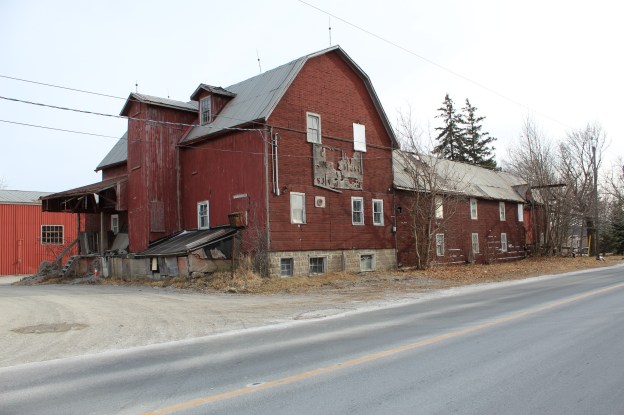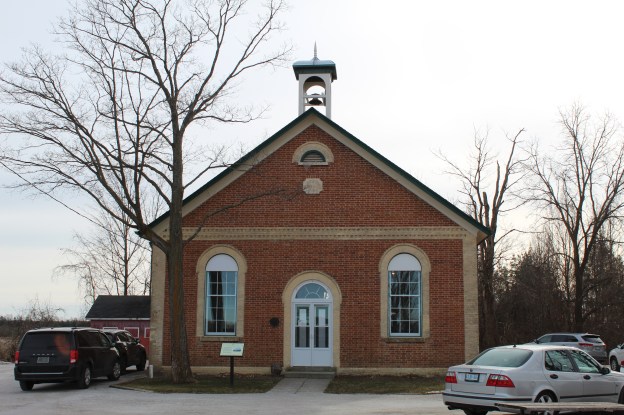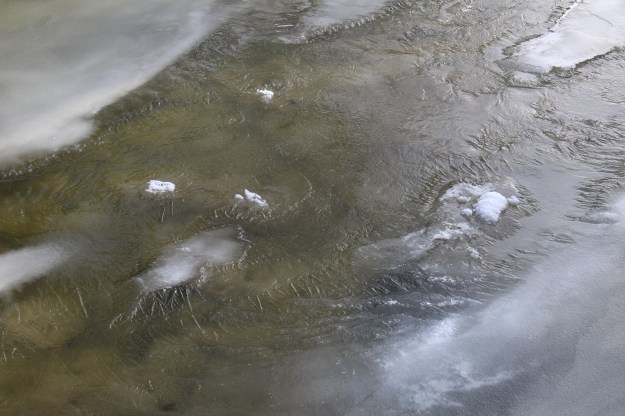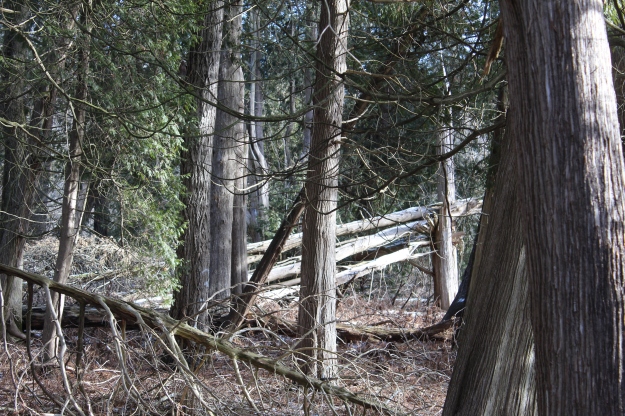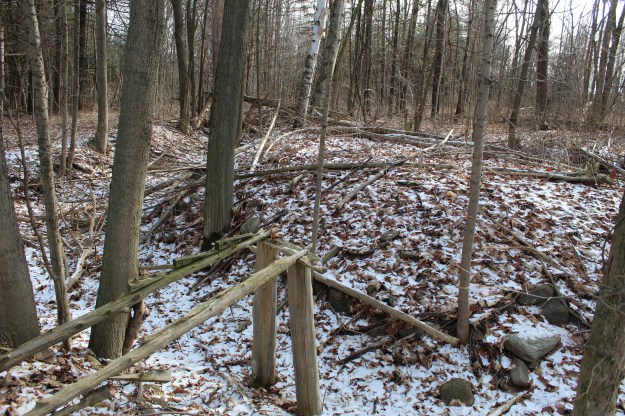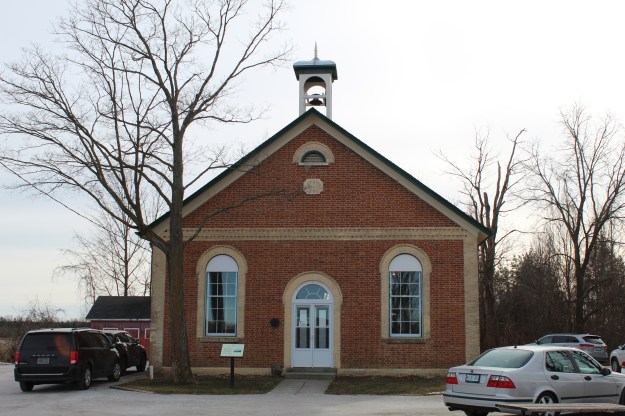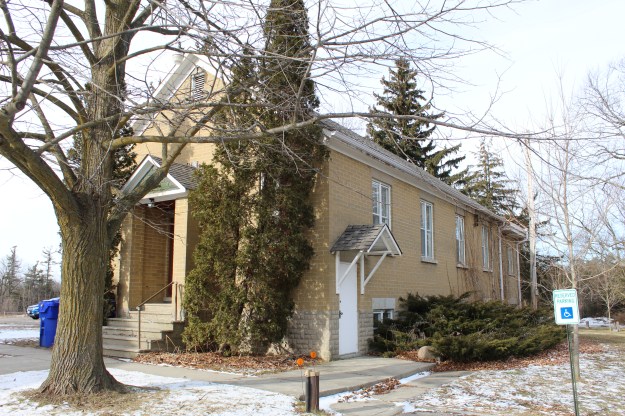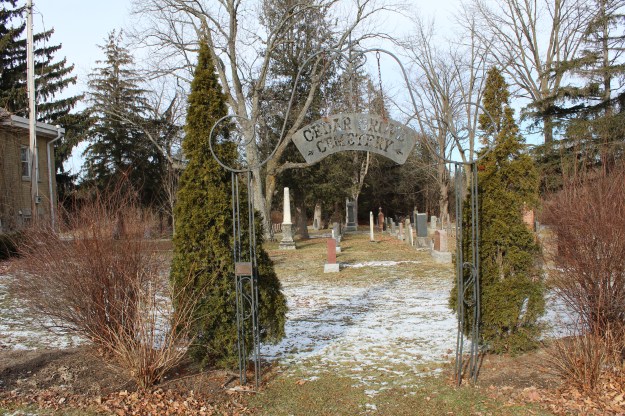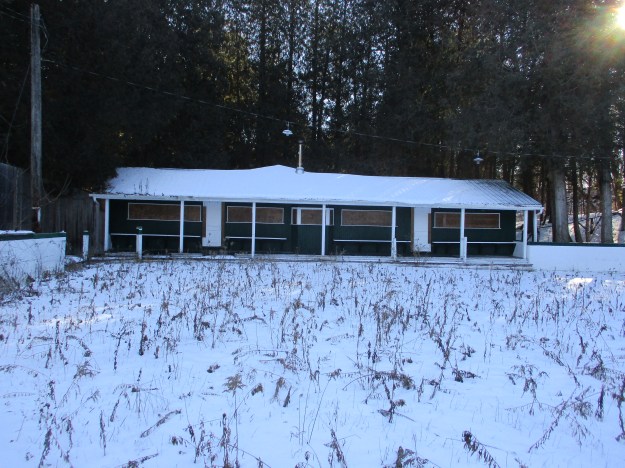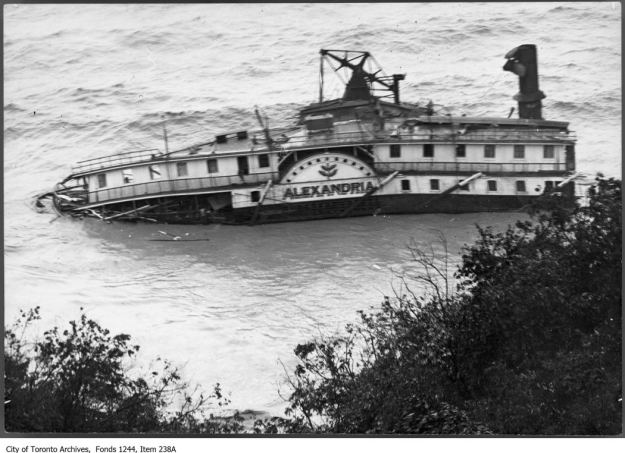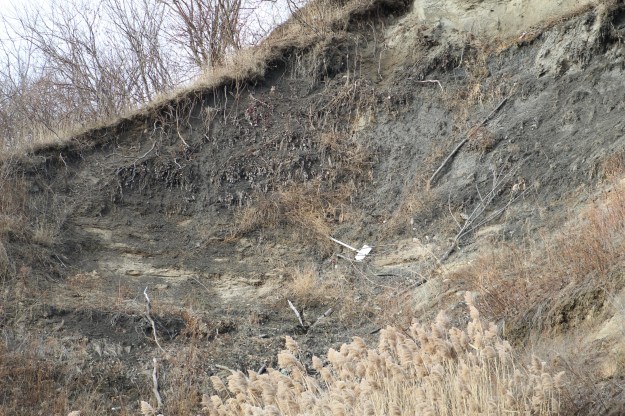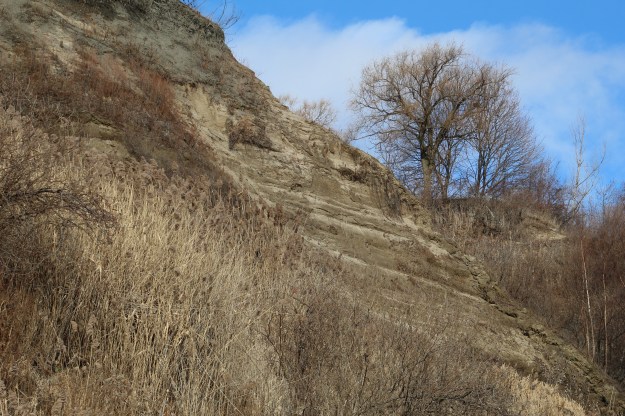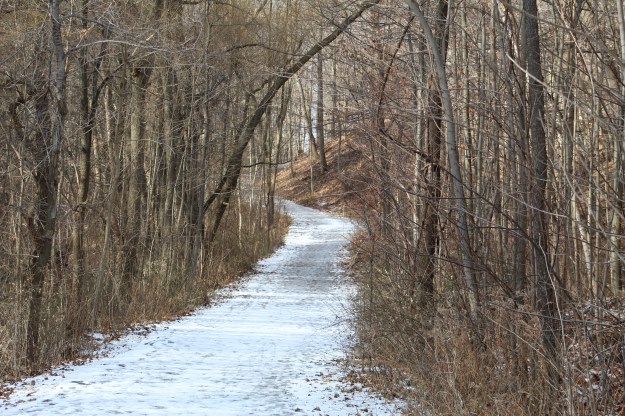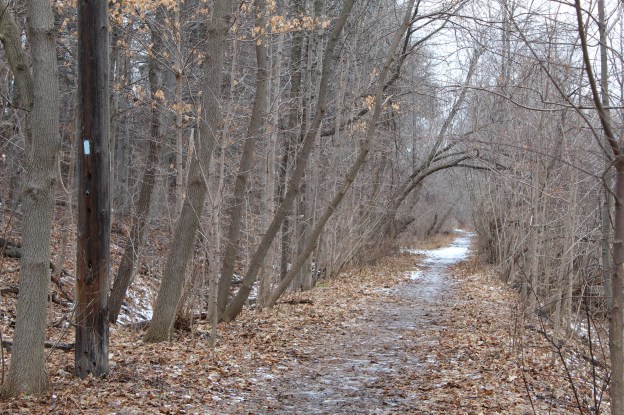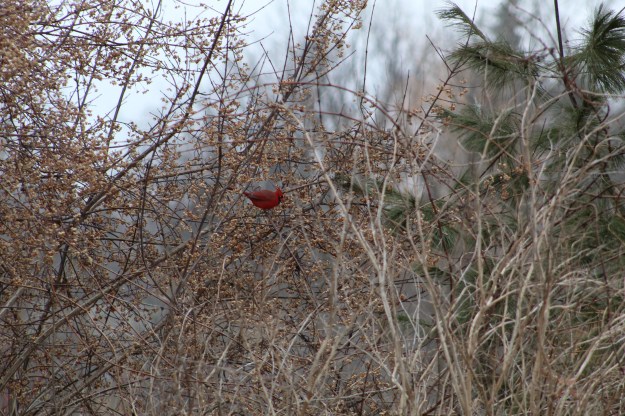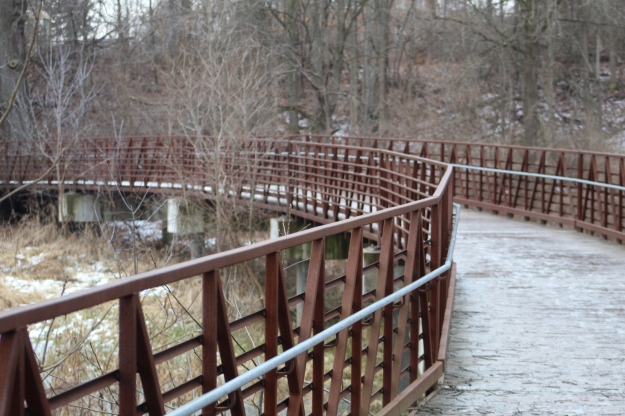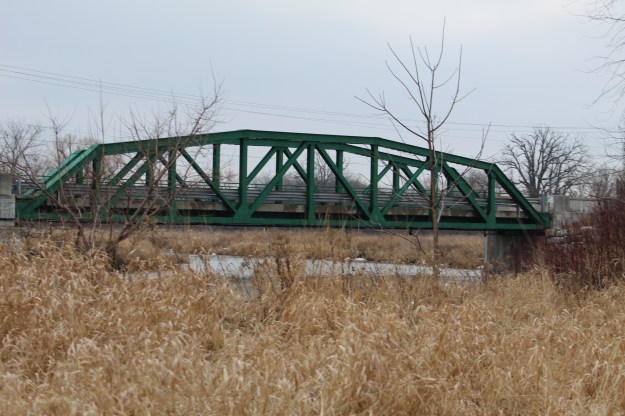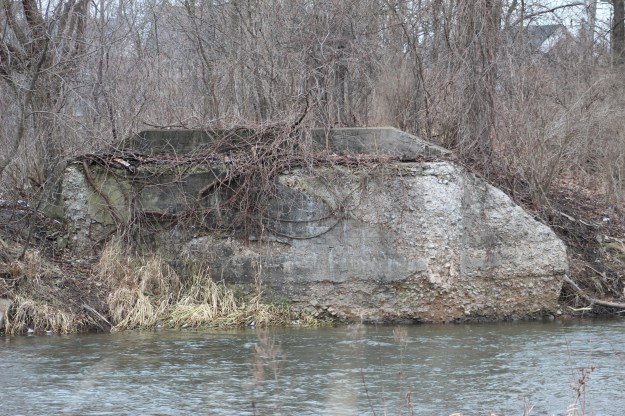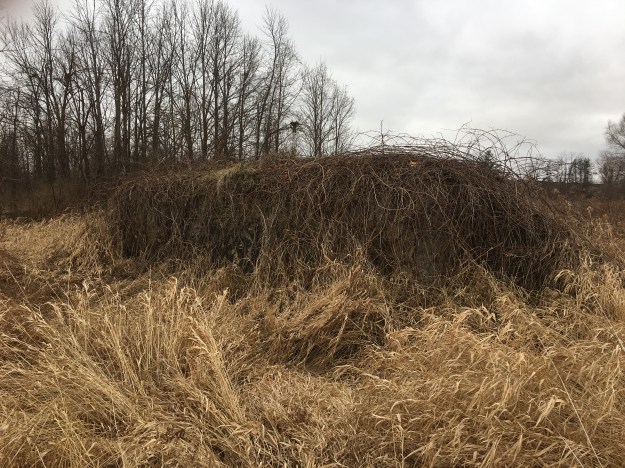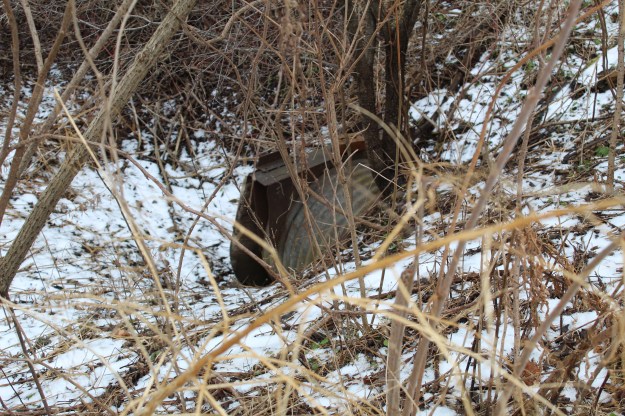Saturday January 12, 2019
The community of Cedar Grove has become a ghost town compared to the former glory days in the 1800’s when it was a industrious mill town. All four saw mills and both grist mills have disappeared leaving only the cider mill. Peter Lapp erected the building in 1872 with the idea of taking advantage of the abundant local apple crops. Lapp started making apple cider but soon added other products such as cider vinegar. Lapps Cider Mill is considered to be one of the earliest and biggest examples of this industry in Markham. The building is starting to show signs of disrepair after sitting vacant for years. The front canopy has begun to droop badly and several boards have fallen away. However, a steel roof has been added in the recent past indicating that someone had plans for the building.

Two small dormers with six over six windows lit the upper floor of the mill. These small glass panes are mostly intact with one just small fracture. Just below the main roof line a small set of windows is broken out which lets the weather into the building.

The elevator shaft had three doors, one for each interior floor. Small lightning rods can be seen on top of the elevator and the corners of the roof. Lightning rods are designed to carry energy from a potential lightning strike through a wire and into a ground rod where it can dissipate harmlessly. The north face of the building has a frame construction with tightly spaced boards. On the west side of the building a layer of Insulbrick has been added. This was likely done in the 1920’s when this asphalt siding was at the height of popularity.
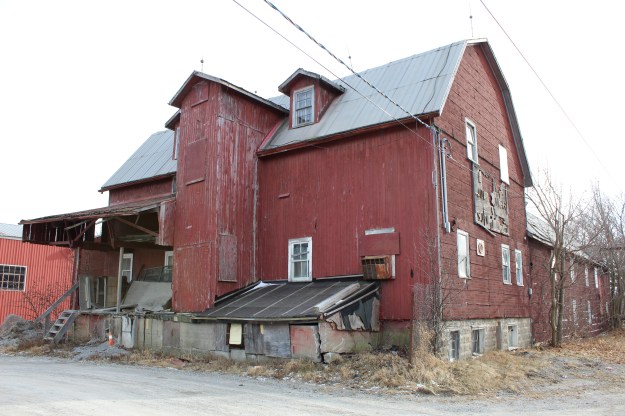
The west side of the building reveals something quite interesting. The larger north end section appears to be a later addition. This is suggested by the foundation which is made of precast concrete blocks that would not have been available in 1872. This means that this end of the building was either raised onto the foundation or added after 1900.

Ironically the plaque that announces this building is historically designated is attached just below the business sign that can only be partially read. Many of the letters have fallen off. At Markham Museum there is another building known as Lapp’s Cider Mill. It is a drive shed that was moved from a different Lapp property in Cedar Grove. Lot 3 on the south side of Little Rouge Creek belonged to James Lapp who was the town blacksmith. His blacksmith shop is now also on display at Markham Museum. The press and other inner workings were moved from this building to the one at the museum where they are once again operational.
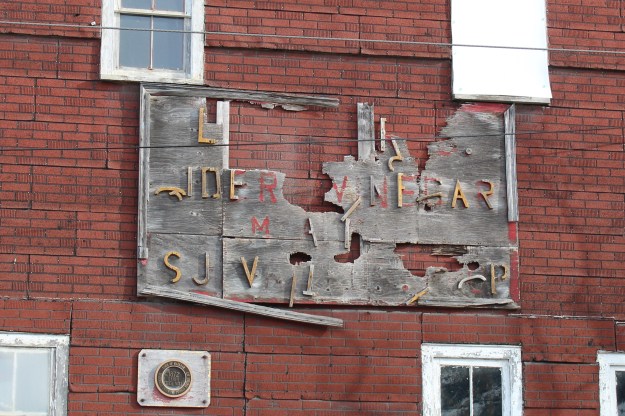
The length of the hoist over the loading doors suggests that full orchard boxes of apples could be transferred from a truck into the mill.
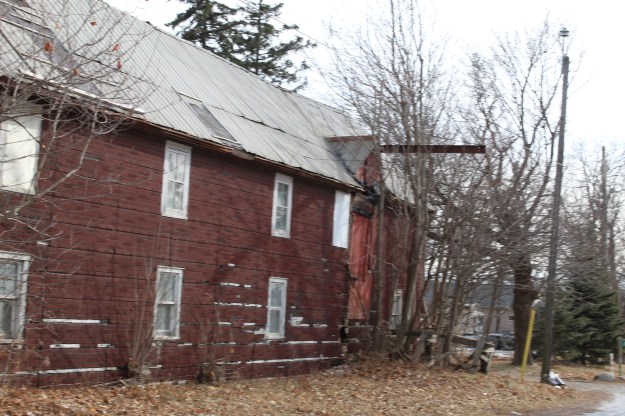
Two levels of loading doors with a provision for a hoist provide yet another access for snow and rain to enter the building.

There is a set of ground level doors are at the south end of the building and once again we find more broken windows on the upper floor.
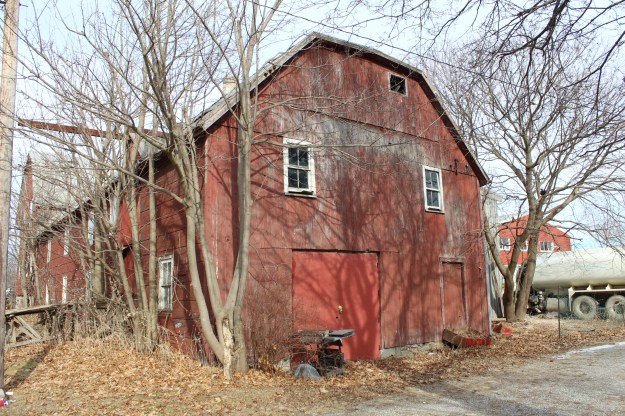
It is truly a shame that this building appears to be slowly decaying. You can read more about Cedar Grove in our story Cedar Grove – Ghost Towns of the GTA.
Google Maps link: Cedar Grove
Like us at http://www.facebook.com/hikingthegta
Follow us at http://www.hikingthegta.com
